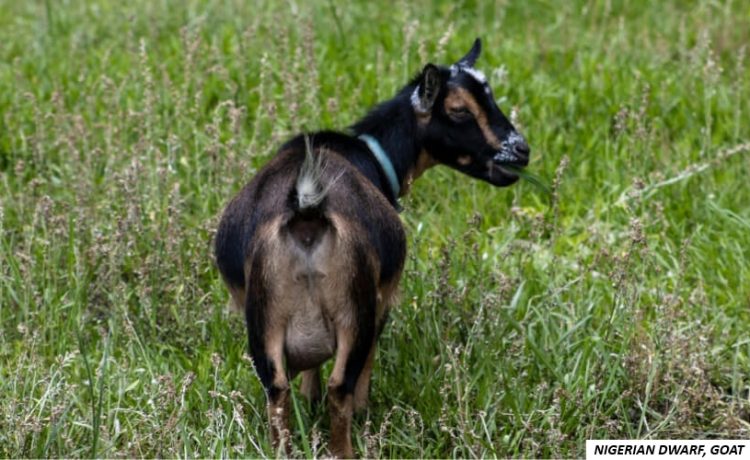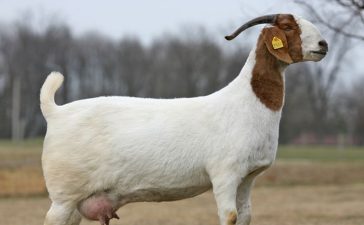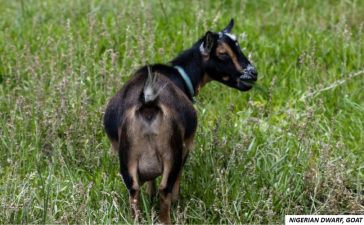The Heat Within: Decoding the Estrus Cycle in Female Goats (Part 4)
Introduction
Despite the best efforts using natural strategies, nutrition, and herbal support, some female goats (does) simply won’t cycle on time. Whether it is due to poor seasonality, silent heat, or anovulation, there comes a point when science can step in to help.
In this post, we explore the medical and hormonal methods available to goat breeders who want to bring a doe into heat – and do so predictably, safely, and under veterinary guidance. These techniques are especially valuable for artificial insemination (AI), synchronized breeding programs, and fertility problem-solving.
By understanding how and when to use hormone-based interventions, you will be better equipped to make informed decisions about your herd’s reproductive health.
Also you may need to read this article series previously published parts 1, 2 and 3 to better understand various methods we have covered on the subject.
When to Consider Hormonal Intervention
Not every situation calls for hormones. In fact, many does will cycle normally with natural support. However, hormonal induction can be useful when:
- A doe is not showing signs of heat (silent heat)
- A herd is being prepared for timed breeding or AI
- Does are out of season or off-cycle
- Breeding must occur within a narrow window
- Diagnosed reproductive issues exist (e.g., anovulation)
Important: Hormone use should always be supervised by a veterinarian or experienced goat breeder. Incorrect usage can lead to infertility, metabolic disorders, or health decline.
Common Hormonal Tools and Protocols
Here are the most widely used hormone-based tools for inducing or synchronizing estrus in female goats:
1. CIDRs (Controlled Internal Drug Release)
What Is It?
A CIDR is a small Y-shaped silicone device inserted into the vagina that slowly releases progesterone.
How It Works
- Progesterone prevents heat and ovulation while the CIDR is in place
- When removed, the sudden drop in progesterone signals the body to come into estrus
Protocol (Standard Timed AI):
- Insert CIDR for 11–14 days
- Remove CIDR and administer Lutalyse (prostaglandin) at removal
- Heat occurs within 24–72 hours
- Breed naturally or inseminate based on signs or fixed schedule
Benefits:
- Predictable, programmable
- Ideal for synchronization in large herds
- Enhances AI success rates
Considerations:
- Requires clean handling and hygiene
- Not suitable for does with vaginal infections
- Must be purchased from a vet or licensed distributor
2. Prostaglandins (e.g., Lutalyse, Estrumate)
What Are They?
Prostaglandins such as Lutalyse (dinoprost) or Estrumate (cloprostenol) trigger the regression of the corpus luteum (CL) — the structure that maintains progesterone during diestrus.
How It Works
- If a CL is present (i.e., the doe has ovulated previously), prostaglandins will dissolve it, lowering progesterone levels and initiating estrus.
Standard Protocol:
- Inject 2 mL Lutalyse intramuscularly
- Expect heat within 24–72 hours
- Observe and breed accordingly
Benefits:
- Quick and easy
- No insertion required
- Useful for breaking prolonged diestrus
Limitations:
- Only works if CL is present — doesn’t help anovulatory does
- Side effects include sweating, panting, and discomfort
- Never use in pregnant does — it will terminate pregnancy
3. GnRH (Gonadotropin-Releasing Hormone)
What Is It?
GnRH triggers the release of LH and FSH from the pituitary, encouraging ovulation and follicle development.
Common Product: Cystorelin (gonadorelin)
How It Works:
- Used to “prime” the ovaries to release eggs or form a CL
- Often paired with CIDR protocols or AI schedules
Sample Use:
- Administer GnRH at CIDR insertion or 24–48 hours before expected ovulation.
4. PG600 (eCG + hCG blend)
What Is It?
PG600 contains equine chorionic gonadotropin (eCG) and human chorionic gonadotropin (hCG). It stimulates follicle development and ovulation.
How It Works:
- Used in out-of-season or immature does
- Often given at CIDR removal or after prostaglandin
Protocol:
- Inject 3–5 mL subcutaneously at or just after CIDR removal
- Observe for heat within 48 hours
Warnings:
- Off-label use in goats (approved for swine)
- May cause cysts or hyperstimulation if misused
Sample Synchronization Protocol for Does (Timed AI)
| Day | Action |
|---|---|
| Day 0 | Insert CIDR |
| Day 7–11 | (Optional) Inject GnRH |
| Day 11 | Remove CIDR + Inject Lutalyse |
| Day 12 | Inject PG600 |
| Day 13–14 | Breed or inseminate 48–56 hrs after CIDR removal |
Monitoring After Hormonal Induction
Once hormone protocols are used, it’s crucial to monitor your doe closely.
Look for:
- Behavioral heat signs: tail wagging, mucus, bleating
- Standing heat: willingness to be mounted
- Buck response: teaser bucks will react strongly
If no signs are present after 72 hours, consult your vet — your doe may have cysts, be pregnant, or require follow-up care.
Troubleshooting Hormone Use
| Problem | Possible Cause | Solution |
|---|---|---|
| No response to prostaglandin | No corpus luteum present | Use GnRH or wait for next cycle |
| Heat signs but no pregnancy | Poor timing or low sperm quality | Confirm timing and semen viability |
| Repeated silent heats | Uterine infections, hormonal imbalance | Conduct ultrasound or bloodwork |
| Side effects after injections | Sensitivity to prostaglandin | Try alternate product (e.g., Estrumate vs Lutalyse) |
Safety and Ethical Considerations
Hormone use in livestock comes with responsibility:
- Always dose by weight and age
- Wear gloves when handling prostaglandins (can cause miscarriage in humans)
- Never administer hormones to pregnant does unless directed by a vet
- Avoid overuse — let does recover between cycles
- Document all treatments, timing, and responses.
Ethical Tip: Use hormones as tools, not crutches. Their best use is to support fertility, not to force it unnaturally on compromised or sick animals.
When to Consult a Vet
Contact a goat-savvy veterinarian if:
- Your doe has missed multiple heats or cycles
- You suspect uterine infection or cystic ovaries
- You’re planning a synchronization program for AI
- You need access to prescription-only products like CIDRs or PG600
Case Example: Synchronized Breeding for AI
Scenario: 6 dairy does for synchronized artificial insemination in early October.
Action Plan:
- Insert CIDRs on Sept 25
- Remove CIDRs + inject Lutalyse on Oct 6
- Administer PG600 on Oct 7
- Breed with fresh semen AI on Oct 8 (48 hrs post-CIDR removal)
Result: 5 out of 6 does confirmed pregnant via ultrasound by Day 28.
Final Thoughts
Modern hormonal tools like CIDRs, Lutalyse, and PG600 can be game-changers for breeders with tight schedules, fertility issues, or commercial timelines. But they require care, planning, and a strong foundation in your does’ natural biology.
When used responsibly – and alongside proper nutrition and management – hormone induction can significantly improve your herd’s reproductive outcomes.
In Part 5, we will wrap up the series by troubleshooting common breeding problems, decoding silent heats, and offering practical tips to fine-tune your goat fertility program.



